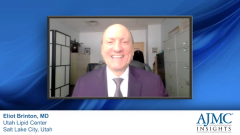
Improving Access to PCSK9 Inhibitors in the Inpatient Setting
Leandro N. Slipczuk, MD, PhD, details his organization’s effort to support uptake of PCSK9 inhibitors in the inpatient setting.
Episodes in this series

Leandro N. Slipczuk, MD, PhD: To solve some of these problems, for the champion or in the lipid clinic, at Monte [Montefiore Medical Center] we have the cardiometabolic clinic. This is integrated by many providers. We have specialists—a nephrologist, a specialist in heart failure, an endocrinologist, dedicated pharmacists—working with us. To reach the patients who are the highest risk, the patients who had a recent ACS [acute coronary syndrome], we started a Meds-to-Bed program. The idea is that we have a huge institution. We’re a network that has multiple hospitals. We wanted to take the opportunity, when we’re seeing the patient in the hospital, to get that patient to goal. We recognize this is the highest patient, and maybe the patient afterward will follow up in a different hospital in the community setting or in a private practice, where they may not get the medication they need and may not reach the goal. They may get lost to follow-up. A lot of times, people leave the hospital and do not follow up for months or even years.
We took this opportunity of the index hospitalization to get all the medications in tune to reach the goal. We developed the Meds-to-Bed program for PCSK9 inhibitors. When we took the data from the trials and patients on the highest-tolerated statin, and they were still not at goal, and they had an ACS, we prescribe the PCSK9 inhibitor on the discharge. We will get the authorization, and we will get the patient trained in the hospital, so they know how to inject it. Then they can leave with the medication. That way, they are set for the period of highest risk after the ACS.
To share information and to reach the goal, different approaches can be taken. I spoke about the Meds-to-Bed program. We also partner with another company that made a difference for us. Initially, in the lipid clinic, we were streamlining all the approvals for the PCSK9 inhibitors through 1 of our main pharmacies. We trained the pharmacists, and we developed a group that knew how to get the authorizations and understood the whole process. That’s made a huge difference at Montefiore and in others institutions where I worked.
But now there are other options. We partner with another company. When there’s an order for a PCSK9 inhibitor, they pick up that order, and they take care of the prior authorization. This has worked great. They also help the patients if they need assistance on payments. They encourage them to continue taking the medication because if they start it but don’t continue the therapy, that doesn’t work. They ensure that the patient stays on it. I’ve had some instances in which patients get admitted for surgery—an ankle surgery or some admission to a hospital. But on discharge, the medication gets stopped. For example, PCSK9 inhibitor gets stopped by mistake. This company identifies this mistake and notifies me, and then we reach the patients and make sure they stay on therapy.
This transcript has been edited for clarity.
Newsletter
Stay ahead of policy, cost, and value—subscribe to AJMC for expert insights at the intersection of clinical care and health economics.









































